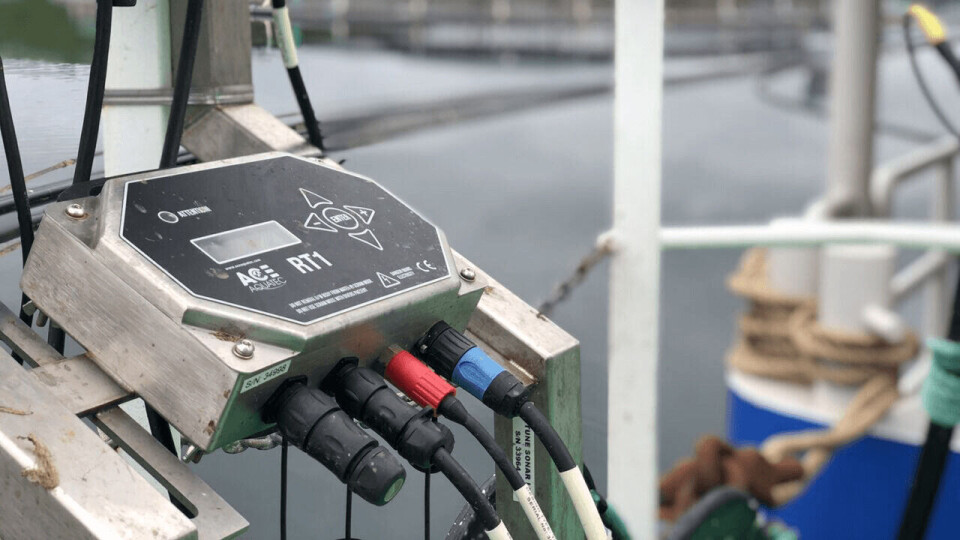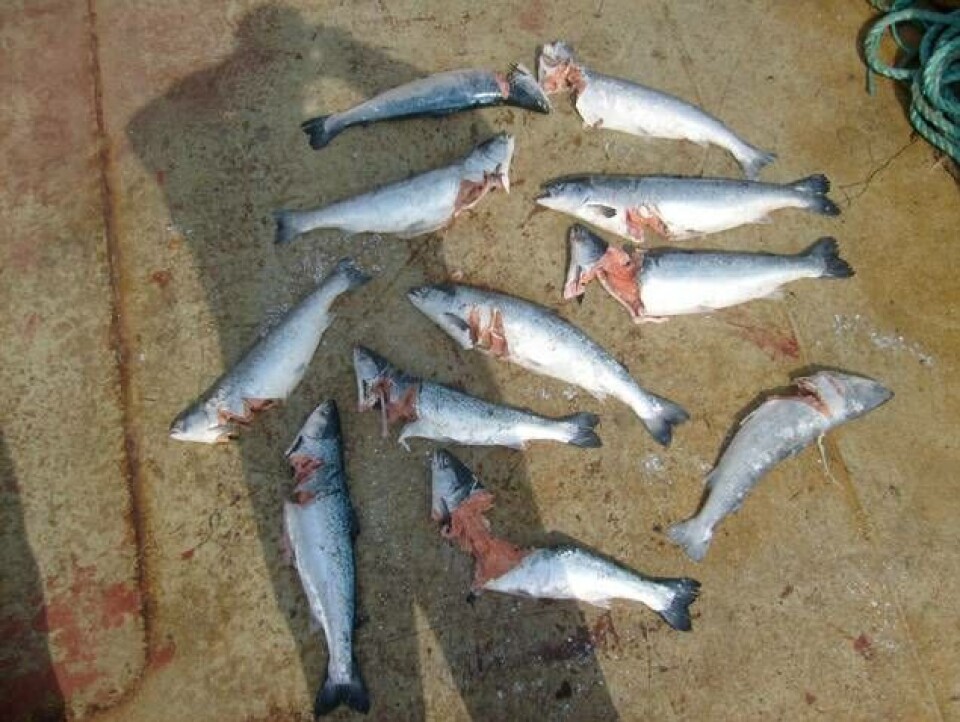
Harm-free seal scarer puts Ace Aquatec in contention for second GSA award
Dundee-based fish farming technology supplier Ace Aquatec has been shortlisted for this year’s Global Aquaculture Innovation Award by the Global Seafood Alliance (GSA).
Ace Aquaculture won the award in 2019 for its electric in-water fish stunner, and has this time reached the final three for its humane predator deterrent technology.
Seals cause millions of pounds-worth of losses on salmon farms in Scotland, with fish dying either as a direct result of seal attacks or from the distress caused by the predators’ attempts to reach them by pushing against nets.
Shooting problem seals is no longer allowed, and the use of old-style acoustic deterrent devices (ADDs) that issued a constant sound has been discontinued due to potential disturbance to other marine mammals.

Triggered by seals
Ace Aquatec has never made constant-sound deterrents, instead using ADDs that were originally triggered by physical sensors that detected fish moving towards the centre of a pen in response to a seal’s presence outside the net. It has also made equipment to deter seals with harmless electric shocks.
The latest versions of its Acoustic Startle Response (ASR) and Electric Startle Response (ESR) equipment are triggered when a system of cameras, night vision and thermal imaging identifies an approaching predator. The Artificial Intelligence-linked cameras are trained to recognise the shape of seals’ heads bobbing at the surface of the water and can distinguish seals from porpoises and whales.
Fast peak
The ASR has signal characteristics that focus on sound quality rather than volume, enabling Ace Aquatec to tailor the frequency of the device to the hearing sensitivity of a target species. The sounds are programmable, randomised pulses with 3- to 10-millisecond rise times. Ace Aquatec says the short amount of time from the onset of the sound to its highest peak creates a visceral response in mammals that cannot be overcome.
Successive encounters with this noise create sensitisation (gets worse) rather than habituation (gets used to it) which means that sound is more impactful at lower volumes on successive encounters. The company adds that the system keeps being effective because it randomises the frequency of the pulses, the volume of pulses and the duration of silences.
There are three ESR devices: an electric fence to deter seals from climbing into a pen, and an electric net and “electric fish” – a fake mort with protruding electrodes – to give below-surface protection. The ESR devices give a seal a harmless but unwelcome shock.

Zero injury
Ace Aquatec chief executive Nathan Pyne-Carter told the GSA’s Responsible Seafood Advocate online magazine: “We have zero injury and zero disturbance with our systems when using currently available animal distribution models.
“It’s better to respond to a seal approaching on a predatory route rather than putting out a non-targeted wall of sound all the time. Our cameras know the difference between a seal and a porpoise, and our algorithmic rules can override the production of sound.”
MMPA-compliant
Importantly, Ace Aquatec’s predator deterrents appear to tick all the boxes for compliance with the US Marine Mammal Protection Act (MMPA), although US authorities have yet to issue a definitive ruling.
The MMPA requires that salmon producers exporting their fish to the US don’t harm marine mammals, either by shooting them or using ADDs that can damage their hearing. Salmon farming regions that don’t adhere to the MMPA requirements may find that they can’t export to the US from 2022, when a five-year exemption ends.
200 rental systems
In recent years, the seal population in Scotland has increased significantly. “We now have over 200 rental systems, with sites all around the world from Canada to Europe, and in different industries from fish farming to offshore pile driving,” said Pyne-Carter.
“Predation is an interaction that causes significant financial and welfare impacts, and we have sought to provide a technological solution that gives farmers the tools to protect their stocks while minimising the impact on the local environment and wildlife.
“The grey seal, one of Scotland’s apex predators, is growing in numbers and can do huge amounts of damage to fish and to a farmer’s livelihood. We need to help bring the seal population back into balance by encouraging natural foraging behaviours and avoid an unnatural preference to predate on farm pens.”
GOAL presentation
Ace Aquatec and the other two Global Aquaculture Innovation Award finalists will present at the final session of the GSA’s annual GOAL conference, being held virtually on November 16 and 17, with the winner decided by an audience vote.
One of the other finalists is Nucleic Sensing Systems, a Minnesota company offers automated continuous monitoring system for aquaculture pathogens. The third finalist has not yet been announced.






















































